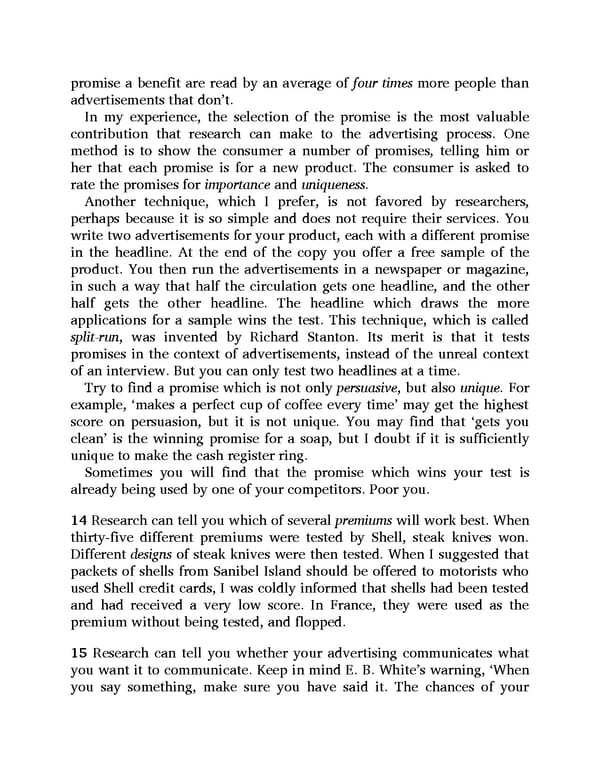promise a benefit are read by an average of four times more people than advertisements that don’t. In my experience, the selection of the promise is the most valuable contribution that research can make to the advertising process. One method is to show the consumer a number of promises, telling him or her that each promise is for a new product. The consumer is asked to rate the promises for importance and uniqueness. Another technique, which I prefer, is not favored by researchers, perhaps because it is so simple and does not require their services. You write two advertisements for your product, each with a different promise in the headline. At the end of the copy you offer a free sample of the product. You then run the advertisements in a newspaper or magazine, in such a way that half the circulation gets one headline, and the other half gets the other headline. The headline which draws the more applications for a sample wins the test. This technique, which is called split-run, was invented by Richard Stanton. Its merit is that it tests promises in the context of advertisements, instead of the unreal context of an interview. But you can only test two headlines at a time. Try to find a promise which is not only persuasive, but also unique. For example, ‘makes a perfect cup of coffee every time’ may get the highest score on persuasion, but it is not unique. You may find that ‘gets you clean’ is the winning promise for a soap, but I doubt if it is sufficiently unique to make the cash register ring. Sometimes you will find that the promise which wins your test is already being used by one of your competitors. Poor you. 14 Research can tell you which of several premiums will work best. When thirty-five different premiums were tested by Shell, steak knives won. Different designs of steak knives were then tested. When I suggested that packets of shells from Sanibel Island should be offered to motorists who used Shell credit cards, I was coldly informed that shells had been tested and had received a very low score. In France, they were used as the premium without being tested, and flopped. 15 Research can tell you whether your advertising communicates what you want it to communicate. Keep in mind E. B. White’s warning, ‘When you say something, make sure you have said it. The chances of your
 Ogilvy on Advertising Page 229 Page 231
Ogilvy on Advertising Page 229 Page 231